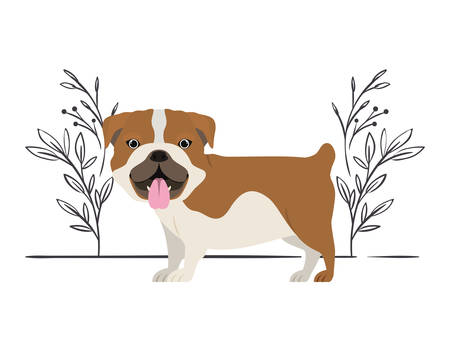Understanding Your Puppy: British Breeds and Behaviour
Before diving into puppy training, its essential for British dog owners to understand the unique characteristics of popular UK breeds. Each breed has distinct traits that can significantly influence their learning style, responsiveness, and behaviour during training sessions. Knowing what makes your puppy tick will help you tailor effective training strategies, ensuring a happy and well-mannered companion.
Popular British Dog Breeds and Their Temperaments
| Breed | Typical Temperament | Training Approach |
|---|---|---|
| Labrador Retriever | Friendly, eager to please, energetic | Responds well to positive reinforcement; requires mental stimulation and plenty of exercise |
| Cocker Spaniel | Affectionate, intelligent, sensitive | Benefits from gentle guidance; thrives with consistency and patience |
| Border Collie | Highly intelligent, alert, energetic | Learns quickly but needs varied challenges; excels with agility and interactive tasks |
| Staffordshire Bull Terrier | Loyal, courageous, playful | Needs early socialisation; responds best to firm but kind leadership |
| Cavalier King Charles Spaniel | Sociable, gentle, adaptable | Enjoys positive attention; short, engaging training sessions work best |
The Influence of Breed on Training Methods
A puppy’s breed isn’t just about looks—its also about energy levels, intelligence, and natural instincts. For example, working breeds like Border Collies require lots of mental stimulation and structured activities to prevent boredom-related mischief. On the other hand, companion breeds such as the Cavalier King Charles Spaniel may respond better to gentle encouragement and shorter sessions. Understanding these differences allows you to adapt your approach for the most effective results.
Practical Tips for British Owners:
- Observe your puppy’s reactions during play and training to identify strengths and sensitivities.
- Match your expectations with your breed’s typical temperament.
- Consult local trainers familiar with British breeds for tailored advice.
- Create a routine that balances physical activity with rest—especially important in the often rainy UK climate!
Essential Puppy Training Tools and Supplies for UK Owners
Setting your puppy up for successful training begins with having the right tools to hand. British dog owners have easy access to a variety of training essentials designed to help raise a well-mannered companion. Below, we break down the must-have supplies, where to find them in the UK, and how each item supports effective puppy training.
Recommended Training Leads
A reliable lead is vital for guiding your puppy during walks and recall sessions. For UK weather and terrain, opt for a waterproof or easy-clean material. The standard length (around 1.2–2 metres) allows control without restricting movement. Slip leads are also popular across Britain, especially for quick transitions between on- and off-lead training.
Types of Training Leads Commonly Used in the UK
| Lead Type | Description | Best For |
|---|---|---|
| Nylon Lead | Durable, lightweight, often weather-resistant | Everyday walks & training in all seasons |
| Slip Lead | No clip needed, easy to put on/off | Puppy classes, recall practice |
| Training Line (Long Lead) | Up to 10 metres long; gives freedom while maintaining safety | Recall & outdoor obedience training |
Treats and Rewards: What Works Best?
Treats are a cornerstone of positive reinforcement. Choose small, soft treats that can be quickly eaten—look for grain-free options if your pup has sensitivities. Many British trainers recommend locally made brands available at high street pet shops like Pets at Home or Jollyes.
Popular Treat Options in the UK
- Lily’s Kitchen Mini Rewards: Natural ingredients, ideal size for repeated rewards.
- Coachies Training Treats: Low-calorie and widely stocked across the UK.
- Pooch & Mutt Meaty Treats: Grain-free and high-value for most puppies.
The Value of Clicker Training
A clicker is a simple device that makes a distinct sound, marking desired behaviours instantly. Clicker training is highly effective and recommended by many British trainers because it’s clear, consistent, and easy for both owner and pup to understand. Clickers are available from local pet shops or online retailers such as Amazon UK.
Other Useful Supplies for British Puppy Owners
- Poo Bags: Biodegradable options are encouraged to keep UK parks clean.
- Treat Pouch: Clips onto your belt or pocket—perfect for hands-free rewarding during walks on blustery days.
- ID Tag: Required by law in the UK; ensure your puppy wears one with up-to-date contact details whenever outdoors.
- Harness: Particularly useful for breeds prone to pulling—choose an anti-pull design fitted by a professional if possible.
- Crate: Helps with house training and provides a safe space during busy family moments or fireworks season.
Where to Shop in the UK?
You can find these items at well-known retailers such as Pets at Home, PetPlanet.co.uk, Jollyes, or even your local vet’s practice. Many towns also have independent pet shops offering advice tailored to your puppy’s breed and age. Investing in quality tools will make every stage of your puppy’s training journey smoother and more enjoyable—for both you and your new best mate.

3. Foundational Training: Housebreaking and Basic Obedience
Establishing a strong foundation in your puppy’s training is crucial for every British dog owner. This stage includes housebreaking (toilet training) and introducing basic obedience commands such as sit, stay, recall, and lead walking. Using practical and positive methods preferred by British trainers will set your puppy up for a lifetime of good behaviour.
Step-by-Step Toilet Training
Consistency is key when it comes to toilet training in the UK’s often unpredictable weather. Take your puppy out first thing in the morning, after meals, naps, and before bedtime. Always use the same spot in your garden or local green space, and reward immediately with praise or a small treat.
| Step | Action | Tip |
|---|---|---|
| 1 | Take puppy to designated toilet area regularly | Every 1-2 hours during the day |
| 2 | Wait quietly until puppy relieves itself | Avoid distractions |
| 3 | Praise and reward instantly | Use a cheerful tone; a bit of kibble works well |
| 4 | If an accident happens indoors, clean thoroughly | Use enzymatic cleaner to remove scent |
Teaching Basic Commands: Sit, Stay & Recall
Sit Command
Hold a treat close to your puppy’s nose. Move your hand upward, causing their head to follow the treat and their bottom to lower naturally. As soon as they sit, say “Sit” and give the treat. Repeat several times daily in short sessions.
Stay Command
Ask your puppy to sit. Open your palm in front of them and say “Stay.” Take a step back; if they remain still, reward immediately. Gradually increase distance and duration as they become more reliable.
Recall (“Come”)
This is vital for safety, especially in parks or countryside walks across the UK. Start indoors or in an enclosed garden. Crouch down, open your arms, and enthusiastically call your puppy’s name followed by “Come!” Reward generously when they respond.
Lead Walking: The British Way
Loose lead walking is essential for enjoyable strolls along pavements and through local parks. Use a flat collar or harness with a standard lead (avoid retractable leads initially). Begin indoors or in the garden:
- Let your puppy get used to wearing the lead.
- Encourage them to walk beside you using treats and gentle praise.
- If they pull ahead, stop walking until the lead loosens, then continue.
- Praise calm walking by your side—this is highly valued on busy British streets.
Quick Reference Table: Basic Obedience Progression
| Command | Start Location | Main Reward Type | Common Challenge |
|---|---|---|---|
| Sit | Home/Garden | Treat/Praise | Puppy jumping up for treat—wait for bottom down before rewarding |
| Stay | Quiet room/Garden | Treat/Praise | Puppy following you—reduce distance & build up slowly |
| Recall (“Come”) | Enclosed Garden/House | Treat/Toy/Playtime | Puppy distracted—use high-value rewards & upbeat voice |
| Lead Walking | Garden/Quiet Pavement | Treat/Praise/Walk continues as reward | Pulling—stop movement until lead slackens again |
The early weeks are all about consistency, patience, and positive reinforcement—qualities that fit well with British values of kindness and respect for animals. With these foundational steps, you’re building habits that will last throughout your dog’s life.
4. Addressing Common Behavioural Issues in British Households
Dealing with typical puppy behaviours such as barking, chewing, and jumping up is a crucial part of raising a well-mannered dog in the UK. British homes often have smaller gardens, semi-detached living spaces, and close-knit communities, which can intensify these challenges. Here are practical strategies tailored to common situations faced by British dog owners:
Barking: Understanding Triggers and Managing Responses
Puppies may bark at delivery drivers, neighbours passing by the window, or household noises. To curb excessive barking:
- Desensitise to Noises: Play recordings of common British sounds (e.g., postman’s knock, bin lorry) at a low volume while rewarding calm behaviour.
- Teach “Quiet” Command: When your puppy barks, calmly say “quiet,” and reward them as soon as they stop.
- Redirect Attention: Provide a favourite toy or treat when you anticipate triggers, such as someone approaching the front door.
Chewing: Protecting Your Belongings
Chewing is normal for puppies but can be destructive, especially in homes with cherished furnishings or limited space. Use this table to identify solutions for common scenarios:
| Problem Area | Practical Strategy |
|---|---|
| Shoes & Wellies by the Door | Store footwear in closed cupboards; offer chew-safe toys near entryways. |
| Cables & Electronics | Use cord protectors; spray bitter apple deterrent on exposed wires. |
| Furniture Legs | Provide sturdy chew toys; supervise and redirect whenever chewing starts. |
Jumping Up: Creating Polite Greetings
Puppies often jump up to greet people, which can be problematic when welcoming guests or meeting neighbours on the school run. Try these steps:
- Ask guests to ignore your puppy until all four paws are on the floor.
- Reward calm greetings with treats and praise immediately.
- If your puppy jumps, turn away and withhold attention until they settle.
Community Etiquette for British Settings
When out in parks or walking along narrow pavements, encourage your puppy to “sit” when meeting others. Practising this command at home prepares them for real-life encounters with fellow dog walkers or families with children, fostering good manners and local harmony.
5. Socialisation in the UK: Parks, Pubs, and Public Spaces
Socialising your puppy is a cornerstone of effective training, particularly within the unique environment of the UK. British culture places great importance on well-mannered dogs who are comfortable in a variety of public settings. From bustling parks to dog-friendly pubs and even public transport, exposing your pup to these environments early on helps ensure they become a confident and sociable companion.
Key Socialisation Spots for British Puppies
| Location | What to Expect | Tips for Safe Socialisation |
|---|---|---|
| Local Parks | Other dogs, joggers, children, cyclists | Start with quieter times; use a long lead; reward calm behaviour around distractions |
| Dog-Friendly Pubs | Loud noises, food smells, friendly patrons | Check pub’s dog policy; bring treats and a familiar blanket; settle pup under the table |
| Public Transport (Bus/Train) | Crowds, unfamiliar sounds, confined spaces | Introduce short trips first; carry puppy if small; reward calmness and ensure proper lead control |
| High Streets & Markets | Busy foot traffic, street performers, new scents | Keep sessions brief; praise positive interactions; avoid overwhelming situations initially |
British Etiquette for Puppy Socialisation
In the UK, dog owners are expected to maintain high standards of courtesy. Always ask before allowing your puppy to approach another dog or person. Use polite greetings and respect personal space—both for people and pets. Be aware that not everyone is comfortable around dogs, especially in enclosed areas like trains or buses.
Puppy Socialisation Checklist for the UK
- Parks: Practice recall and walking calmly on a loose lead.
- Pubs: Teach your pup to settle quietly at your feet.
- Buses/Trains: Introduce gradually, rewarding calm behaviour.
- High Streets: Build up tolerance to noise and crowds in short sessions.
- Puppy Classes: Join local puppy socialisation groups for structured play and training.
Top Tip:
If your puppy appears overwhelmed or anxious in any setting, give them time to adjust. Step back to less busy environments before trying again. Positive reinforcement and patience are key to successful socialisation in British public spaces.
6. Using Positive Reinforcement and British Training Methods
Positive reinforcement is at the heart of modern puppy training, and it aligns well with both contemporary and traditional British dog training philosophies. Instead of relying on punishment, positive reinforcement rewards desirable behaviour, encouraging puppies to repeat actions that result in praise, treats, or affection. This approach is widely recommended by professional trainers across the UK for its effectiveness and its promotion of a strong bond between owner and dog.
Key Positive-Based Techniques
British dog owners benefit from using a variety of reward-based strategies. These not only make training sessions enjoyable but also help build your puppy’s confidence. Here are some core techniques used in British homes:
| Technique | Description | Typical Rewards Used |
|---|---|---|
| Treat Training | Rewarding correct behaviour with small, healthy snacks. | Kibble, chicken pieces, commercial dog treats |
| Clicker Training | Using a clicker sound to mark good behaviour before giving a reward. | Treats, praise after click |
| Praise & Affection | Offering verbal praise or petting immediately after desired actions. | “Good boy/girl!”, strokes, cuddles |
Traditional British Dog Training Philosophies
The British approach often blends positive methods with respect for canine instincts and heritage. Historically, working breeds were trained through patience, consistency, and clear communication. Modern British trainers advocate these same values while emphasising kindness over dominance. Common practices include:
- Short, frequent training sessions to match the puppy’s attention span.
- Calm, assertive leadership without shouting or harsh corrections.
- Socialisation with other dogs and people in local parks or village greens.
Why Positive Reinforcement Works for British Dogs
Puppies respond best when they understand what is expected of them and when their efforts are acknowledged. Positive reinforcement not only leads to quicker learning but also fosters trust—a trait especially valued among British dog owners who see pets as family members. By combining gentle guidance with traditional patience and consistency, you’ll raise a happy, well-mannered companion suited to the British way of life.
7. When to Seek Professional Help: Choosing a UK Dog Trainer
Even with consistent effort and patience, some puppies may display behaviours that are challenging to manage at home, such as persistent aggression, severe anxiety, or difficulty learning basic commands. Recognising when it’s time to seek professional help is crucial for your puppy’s wellbeing and your peace of mind. In the UK, there are clear guidelines and standards for dog trainers, making it easier to find reputable support.
Signs You May Need a Professional Trainer
- Your puppy shows signs of fearfulness or aggression that escalate despite your efforts
- House training problems persist beyond six months of age
- Barking, chewing, or destructive behaviour is excessive and unmanageable
- Your puppy does not respond to basic commands after consistent training
Choosing a Reputable UK Dog Trainer
Not all trainers use the same methods or hold recognised qualifications. It’s essential to select a trainer who aligns with positive reinforcement principles and is accredited by respected UK organisations.
Key UK Dog Training Organisations
| Organisation | Accreditation | Main Features |
|---|---|---|
| The Association of Pet Dog Trainers (APDT) | APDT Registered | Promotes kind, fair & effective training; code of practice |
| The Institute of Modern Dog Trainers (IMDT) | IMDT Qualified | Modern, science-based techniques; ongoing education required |
| The Kennel Club Accredited Instructors Scheme (KCAI) | KCAI Certified | Backed by The Kennel Club; rigorous assessment process |
Checklist for Selecting a Trainer
- Check for membership with APDT, IMDT, or KCAI
- Ask about their training methods—look for positive reinforcement approaches
- Request testimonials or references from previous clients
- Ensure they offer one-to-one assessments before group classes
When Additional Support Is Beneficial
If you feel overwhelmed, or your puppy’s behaviour poses a risk to themselves or others, don’t hesitate to consult your vet first. A good trainer will work alongside your vet if there are medical considerations. Early intervention can prevent small issues from becoming ingrained habits. Remember, seeking help reflects responsible ownership and commitment to raising a well-mannered British dog.


